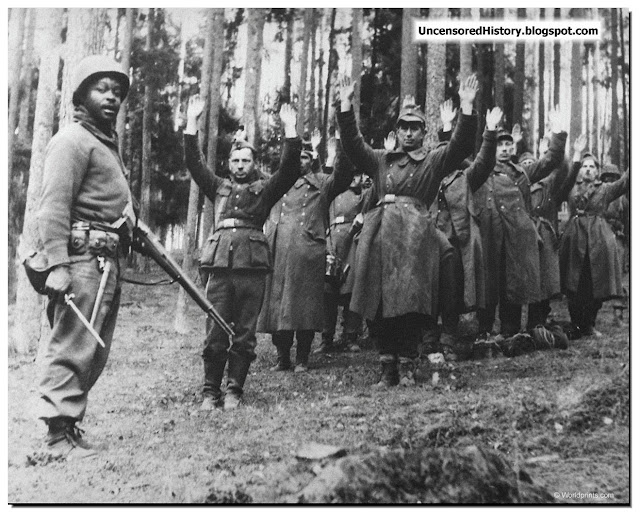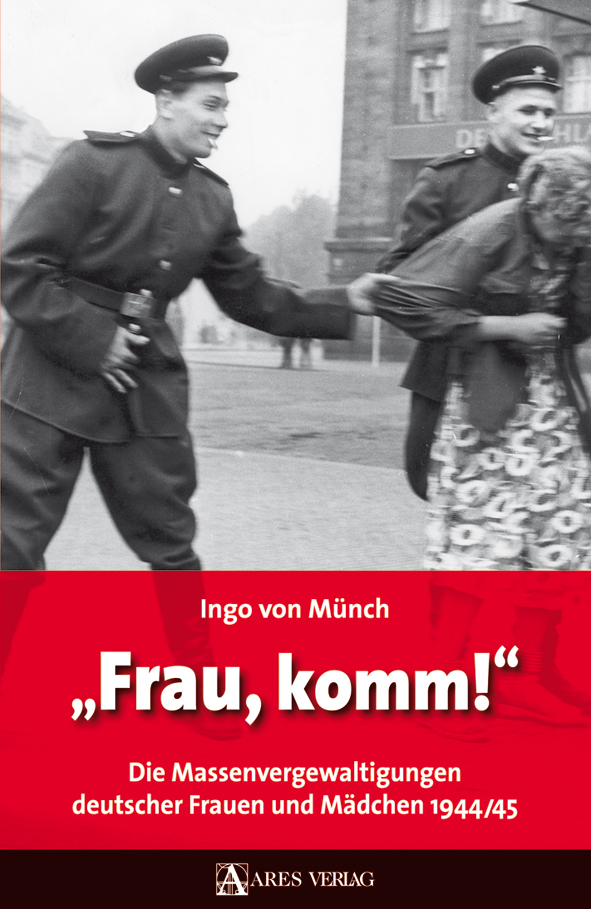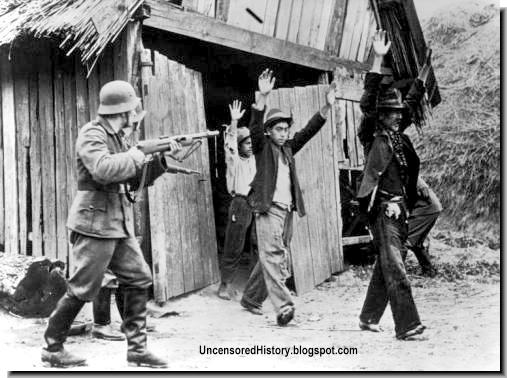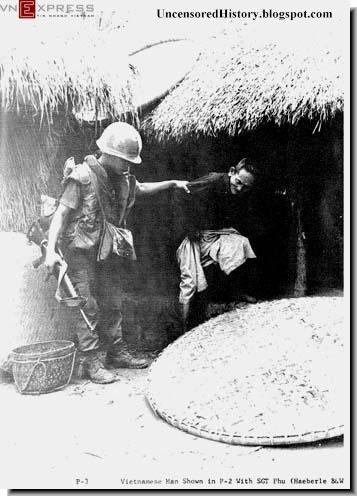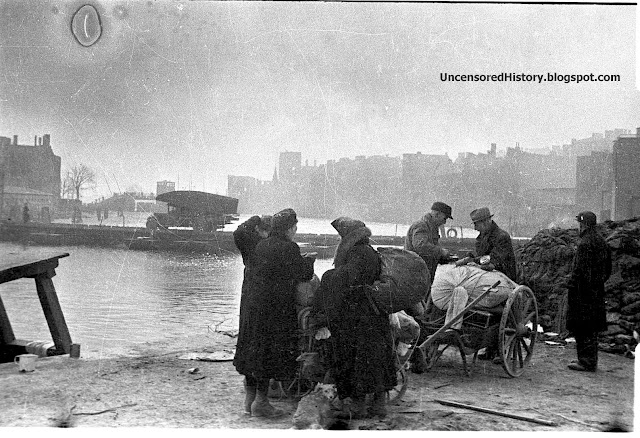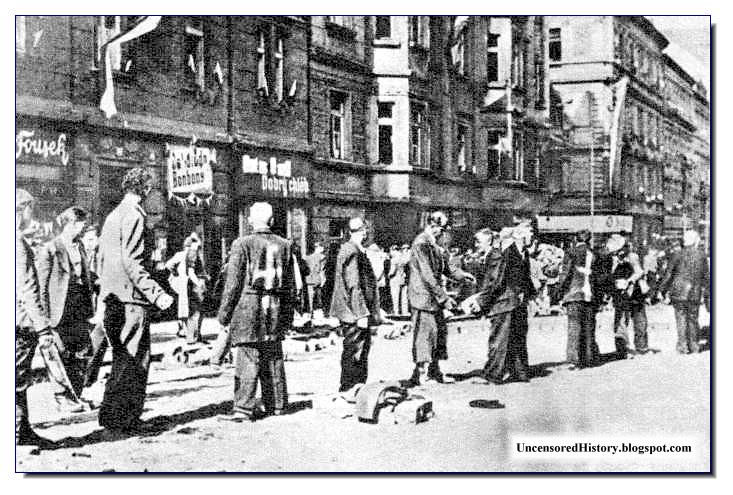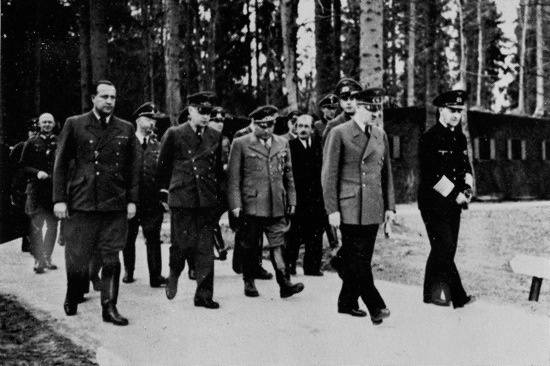 |
| The picture that changed history. February 1, 1968. Saigon Police chief Nguyen Ngoc Loan shoots a Vietcong in the head. |
First some background. 1968. Vietnam. With North Vietnam’s Tet Offensive beginning, Nguyen Ngoc Loan, South Vietnam’s national police chief, was doing all he could to keep Viet Cong guerrillas from Saigon. As Loan executed a prisoner who was said to be a Viet Cong captain, AP photographer Eddie Adams opened the shutter. Adams won a Pulitzer Prize for a picture that, as much as any, turned public opinion against the war.
And the so-called "poor guy" (Named Nguyen Van Lem) shaking in fear as death is seconds away was no innocent man. He was a hard-core Vietcong militiamen, member of a death squad, who had just killed the the Deputy commander of the South Vietnamese Police and his family (At least eight people) in cold blood.
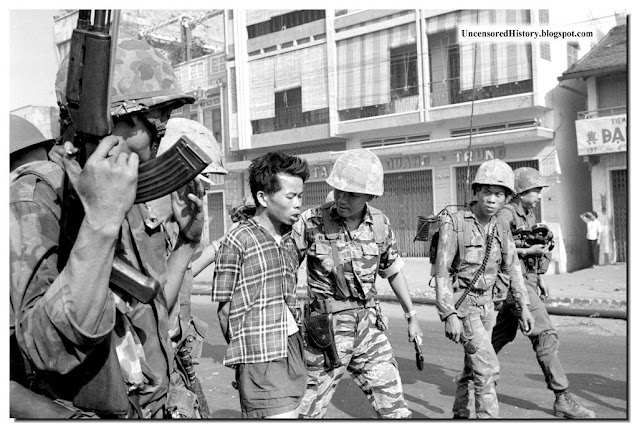 |
| Before the killing |
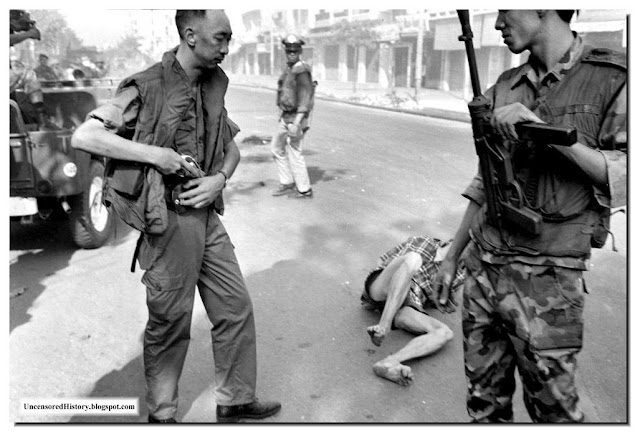 |
| Moments after the shooting |
South Vietnamese sources attested that Lem commanded a Vietcong death squad, which on that day had murdered South Vietnamese National Police officers, or in their stead, the police officers' families; these sources said that Lem was captured near the site of a ditch holding as many as thirty-four bound and shot bodies of police and their relatives, some of whom were the families of Loan's deputy, and six of whom were Nguyen's godchildren.
The photo won Adams (The man who shot the famous picture) the 1969 Pulitzer Prize for Spot News Photography, though he was later said to have regretted its impact. The image became an anti-war icon. Concerning Loan and his famous photograph, Adams wrote in Time:
The general killed the Viet Cong; I killed the general with my camera. Still photographs are the most powerful weapon in the world. People believe them, but photographs do lie, even without manipulation. They are only half-truths. What the photograph didn't say was, "What would you do if you were the general at that time and place on that hot day, and you caught the so-called bad guy after he blew away one, two or three American soldiers?"
Adams later apologized in person to General Nguyen and his family for the damage it did to his reputation. When Loan died of cancer in Virginia, Adams praised him: "The guy was a hero. America should be crying. I just hate to see him go this way, without people knowing anything about him.".
The 2010 book, This Time We Win: Revisiting the Tet Offensive, offers a detailed, sympathetic picture of Loan, portraying him as a relatively honest and uncorrupted officer, who cleaned up and stabilized a difficult Saigon security situation. He was also a staunch South Vietnamese nationalist, refusing to give Americans special treatment in his jurisdiction. For example, he rejected the arrest of a Vietnamese mayor by American military police and insisted that only South Vietnamese authorities could arrest and detain South Vietnamese citizens. He also insisted that U.S. civilians, including journalists, fell under South Vietnamese jurisdiction while in Saigon. Loan's uncompromising stand caused him to be regarded as a troublemaker by the Johnson administration. Loan was also skeptical of the U.S. CIA-backed Phoenix Program to attack and neutralize the clandestine Vietcong infrastructure.
 |
| This Time We Win: Revisiting the Tet Offensive by James S Robbins (Pages 94-104, 105-106) |
Loan's men were also involved in the arrest of two NLF operatives, who had been engaged in peace feelers with U.S. officials, behind the back of the South Vietnamese. His stand against such "backdoor" dealing, and his opposition to releasing one of the communist negotiators, reportedly angered the Americans, and forced them to keep both him and the South Vietnamese better informed of diplomatic dealings involving their country. Loan was also an accomplished pilot, leading an airstrike on Việt Cộng forces at Bo Duc in 1967, shortly before he was promoted to permanent brigadier general rank. The Americans were displeased at his promotion, and Loan submitted his resignation shortly thereafter.
According to the 2010 book: "It was widely believed that Loan was being forced out by the Americans for exposing their dealings with the VC or that he was taking a stand on principle because the U.S. was trying to compel the government to release [communist envoy] Sau Ha." The South Vietnamese cabinet subsequently rejected Loan's resignation. The United States under the Nixon administration was to later negotiate a separate deal with the North that left communist troops in good tactical position within South Vietnam, and forced acquiescence by the South Vietnamese. Later action by the U.S. Congress was to cut off aid to South Vietnam during the final northern conquest in 1975.
























